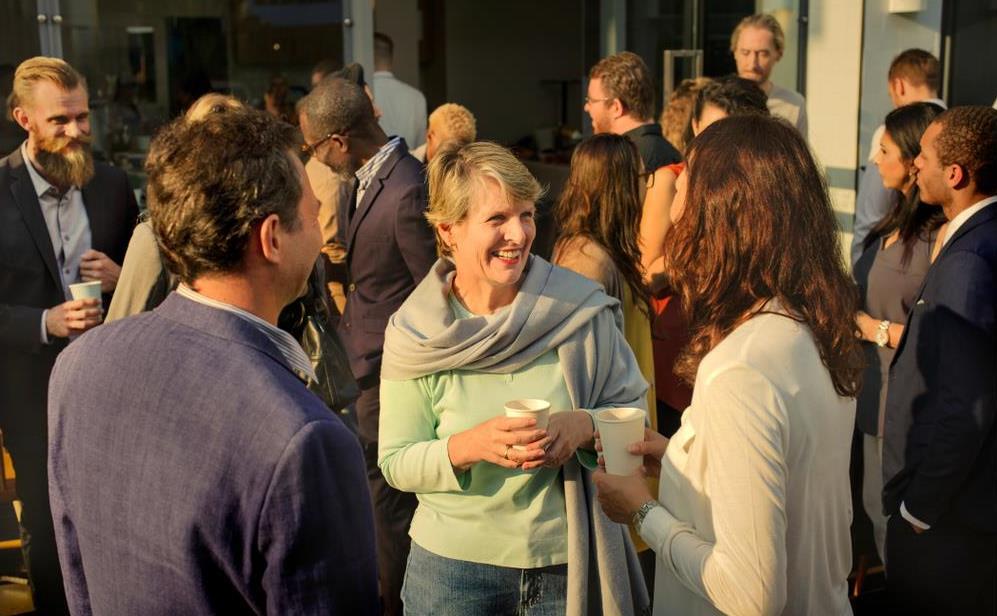Effective networking has always been an important professional and social skill, whatever your career. The ability to get out there and work the room can be a key success factor. Networking gives you the opportunity to meet new people, strengthen relationships with colleagues and clients, hear about exciting opportunities, and perhaps meet your next big client – or someone who knows someone who knows your next big client.
As we all emerge from our COVID-induced hibernation, it’s time to embrace some old-school networking out in the real-world. Here are our top tips for networking success:
It’s all about those P2P moments
Yes, we can all network with anyone, anywhere, online but nothing replicates the impact of making genuine person-to-person (P2P) connections. Real-world networking allows you to raise your profile just by being there and being a little savvy.
The idea of networking may sound a bit naff but it’s not about shamelessly working the room and downing the bubbly; it’s about creating real relationships and building rapport. And now that so much of what we do is conducted online, in-person events can be good for business and good for the soul. It’s easy to feel a little lonely and isolated if you rarely get moments of real P2P interaction. Let’s be honest, there’s no point in being fabulous at what you do if nobody knows who you are. Getting out there and getting your name and face known is central to building your career. And remember, one great in-person conversation can accomplish more than months of emails and social media messaging.
Just being there
Networking can seem a little daunting, especially if you’re not naturally gregarious. It’s just human nature to avoid situations that make us feel anxious. Even so, it’s worth the effort and the angst. You will never meet a new client, enhance a creative relationship, or impress a future employer sitting at home or staying at the studio. Yes, you can network online, but it’s not the same as being there in person.
Virtual networking and real-world networking collide in the many ‘meet-ups’ that are hosted for every interest and specialism. Volunteering for your cause of choice and doing a little pro-bono work can also offer good networking opportunities. Make networking part of what you do and focus on the personal, professional, and creative benefits of being there. It’s all about expanding your creative network, keeping your finger on the pulse of moves and news in the sector, and sharing the latest trends and insights.
Where to go
It’s important to be strategic about which events to attend. Yes, if you’re in arts marketing it’s great to catch-up with fellow marketers, but maybe the real value is in meeting designers or venue managers or festival organisers.
A good approach is to think about projects and everyone who may be involved. Consider a wine company brand manager who is producing a coffee-table book on the local wine industry. They may need to hire writers, photographers, designers, artists, an editor, and a digital print specialist. That cross-pollination can be vital in hearing about opportunities or being recommended when projects come up.
Read: Reasons you really should network
Small business networking events can also be great for building connections. Seek out local events organised by the chamber of commerce, small business hubs, industry bodies, and events for entrepreneurs. Alumni events are another good way to meet people, so look up your university and see what’s available. These events are often free, or low cost to attend, and will help you forge connections with a diverse group of people. And you may even bump into an old mate or two.
Be prepared
Why are you going? Who do you want to talk to? What do you want to achieve? Set yourself some realistic networking objectives. Remember to take your business cards. First impressions count so have something to say and turn your phone to silent. RSVP promptly; remember to thank the host or organiser; and be sure to follow-up with someone if you say you will.
Always aim to make the other person feel good by being considerate and courteous; it’s absolutely not good manners to keep looking at your phone while you’re talking or glancing across the room to see if someone more interesting has just walked in. It’s especially important right now to be aware of everyone’s personal space and resist the temptation to hug or shake hands. We all know this is the new norm, so there’s no need to feel awkward.
Just say hello!
Every relationship starts somewhere. Create an interesting and relevant self-introduction and use it at every opportunity. Use your full name, add some information about what you do, and then take an interest in them. Be open, authentic, friendly, and enthusiastic. Act like you want to be there and you’re having fun. Negativity is never attractive; positivity is always a good look.
Most people are comfortable talking about their work, so start there and then move on to other topics. A warm smile and some happy chit-chat can soon lead to a more meaningful conversation.
Plan some interesting and appropriate conversation starters to take you beyond ‘Hello’. Be topical – know what’s going on in your industry, your community, your world. And be sensitive – the old maxim about not discussing politics, religion and sex is still good advice until you get to know someone better. Help the conversation flow back and forth until it becomes more natural.
The event is the one thing you know you have in common, so use it as a conversational catalyst: ‘Are you a member of this group?’; ‘Have you heard this speaker before?’; ‘Did you attend the event at…’ are all easy and appropriate conversation starters. Don’t worry if everyone seems to be locked in conversations; just take a look around the room and find someone who is standing alone. They will send you a big silent ‘Thank you’ for rescuing them.
Read: How to work the room
Be a giver not a taker
Networking is an organic process that builds relationships and benefits over time. It’s a long-term investment, not an instant fix. Ultimately it’s about building trust and creating confidence. Be genuine and offer something of value – strive to be a giver and not a taker. We all have something to give: contacts, advice, information, friendship, support. Really get to know people, turn contacts into clients, and strangers into friends. Yes, they may want to work with you because of your knowledge and expertise, but it always helps if they like you and trust you.
Listen more
There’s an old adage in sales training that says ‘You’ll never learn more by talking more’. This is about listening to the customer so you can find solutions to their problems. Use this insight in your networking. Learn to ask, listen and respond. This is especially important when networking across different sectors. Use active listening to show your interest and build rapport. The major creative events, such as Glug (Sydney, Melbourne, Brisbane) and the TED Talks can be exciting and inspirational but the real networking value still comes from chatting to the people you meet there. At any big event, industry conference, or trade show, it’s usually the break-out sessions, lunches and happy hours that have the most networking value.
Thank you & goodnight
Know when to leave a person, a group, a function. You can’t meet more people talking to the same people. Say something simple like ‘It’s been great talking with you. Enjoy the rest of the evening.’ as you move along. And remember, every time you network it becomes just a little bit easier.





